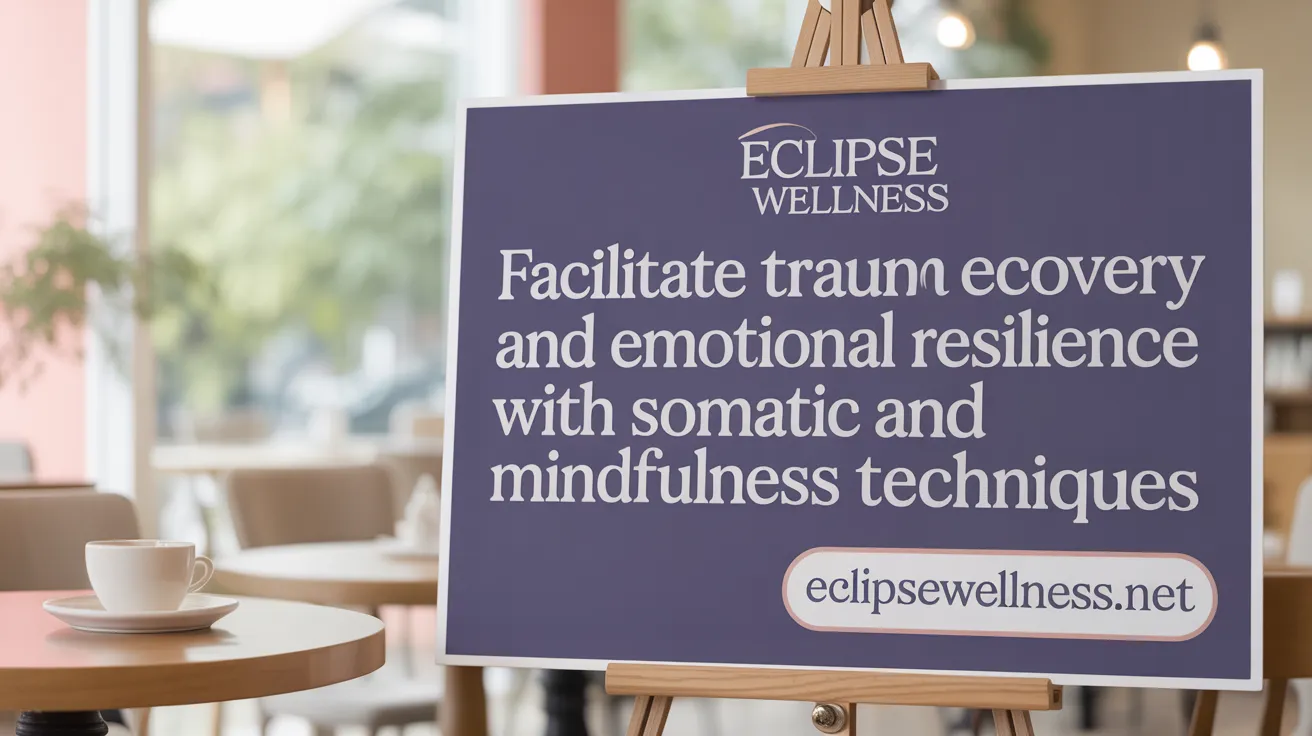Introduction to Mind-Body Healing
What Are Mind-Body Techniques?
Mind-body healing refers to a range of practices designed to improve health by harnessing the connection between mental processes and physical functions. These techniques include meditation, yoga, tai chi, guided imagery, biofeedback, and relaxation methods, all aimed at promoting relaxation, reducing stress, and enhancing overall well-being.
Historical and Cultural Roots
Many mind-body practices draw on rich historical and cultural traditions. Yoga and tai chi, for example, have origins in ancient Indian and Chinese medicine, blending physical movements, breathwork, and meditation. Across cultures, practices like prayer, dance, and healing ceremonies emphasize the unity of mind, body, and spirit. This historical depth underscores the understanding that health involves more than just physical symptoms.
Acceptance in Modern Healthcare
Today, mind-body therapies enjoy growing acceptance within mainstream healthcare systems. Increasing scientific research — including brain imaging studies — validates their physiological and psychological benefits. Integrative medicine models actively combine conventional treatments with mind-body approaches to tailor care to the whole person.
Physiological and Psychological Effects
Scientific studies show that mind-body techniques reduce stress hormones such as cortisol, improve sleep quality, and lower blood pressure and heart rate. Psychologically, they enhance emotional regulation, decrease anxiety and depression, and boost resilience. By influencing neural, immune, and hormonal systems, these practices support the body's natural healing and foster a harmonious mind-body balance.
Understanding Mind-Body Practices and Their Mechanisms

What Are the Types of Mind-Body Techniques?
Mind-body practices engage the mind to foster physical and emotional well-being. Common techniques include:
- Meditation: Techniques like Mindfulness-Based Stress Reduction focus on present-moment awareness, promoting calm and mental clarity.
- Yoga: Combines physical postures, breathing exercises, and meditation to improve flexibility, balance, and reduce stress.
- Tai Chi and Qigong: Chinese practices involving slow, deliberate movements, breath control, and mental focus, enhancing balance and vitality.
- Guided Imagery: Uses directed mental images to promote relaxation and healing.
- Hypnotherapy: Induces a trance state to help manage pain, anxiety, and other health issues.
- Biofeedback: Provides real-time data on physiological functions like heart rate, teaching self-regulation.
- Somatic therapy: Focuses on body awareness and physical sensations to promote mind-body integration and emotional healing.
How Do Mind-Body Therapies Affect the Body Physiologically?
These therapies activate the relaxation response, a physiological state countering the stress response. This response lowers cortisol levels, reduces heart rate and blood pressure, and suppresses inflammatory pathways.
Neuroimaging studies reveal that practices like meditation alter brain regions involved in emotion regulation, attentional control, and self-awareness, demonstrating enhanced neural flexibility and reduced activity in distress-related networks (source).
What Scientific Evidence Supports Mind-Body Practices?
Technologies such as functional magnetic resonance imaging (fMRI) and positron emission tomography (PET) have provided objective evidence of how these interventions modulate brain activity and bodily functions. Meta-analyses report their effectiveness in reducing anxiety, depression, chronic pain, and improving quality of life (source).
What Is the Role of the Relaxation Response in Healing?
The relaxation response—first described in the 1970s—is a state of deep rest that mitigates the harmful effects of chronic stress. Engaging this response through mind-body therapies promotes recovery, resilience, and supports healing by enhancing immune function and reducing stress-induced damage (source).
Regular, guided practice of mind-body techniques fosters a harmonious mind-body connection essential for sustained health and well-being.
Mind-Body Techniques in Managing Pain, Anxiety, and Chronic Conditions

How effective are mind-body therapies in reducing pain and managing symptoms?
Mind-body therapies such as meditation, yoga, guided imagery, hypnosis, tai chi, and qigong have been increasingly recognized for their ability to reduce acute and chronic pain. Research from clinical trials and meta-analyses reveals that these approaches can alleviate preoperative anxiety, chronic pain syndromes, and symptoms related to cancer treatments. They help modulate pain perception and reduce stress hormone levels, promoting relaxation response and physiological balance. Patients often experience improvements in sleep, mood, and overall quality of life, indicating a holistic benefit that goes beyond symptom relief.
What are the applications of mind-body techniques in chronic diseases and mental health?
These therapies serve as complementary treatments for a variety of chronic conditions including arthritis, cancer, cardiovascular disease, and autoimmune disorders. Meditation and mindfulness help manage anxiety, depression, post-traumatic stress disorder (PTSD), and insomnia. Yoga and tai chi improve physical function, mobility, balance, and reduce stiffness, especially relevant in chronic musculoskeletal disorders. Mind-body approaches also support emotional regulation and resilience, vital for patients coping with ongoing health challenges (mind-body therapies for trauma).
What safety considerations should be kept in mind, and why are trained practitioners important?
Mind-body practices are generally safe when performed correctly; however, individual health status and physical limitations should guide therapy selection. Some therapies, such as hypnosis and biofeedback, require trained and certified professionals to ensure the patient's physical tolerance and safety. Consultation with healthcare providers is advisable before initiating these practices to individualize treatment and prevent adverse effects (consulting healthcare providers for mind-body techniques).
What evidence supports the benefits of these therapies?
Scientific advances including neuroimaging studies demonstrate that mind-body interventions induce physiological changes such as decreased cortisol, improved neural regulation, and enhanced immune function. Large-scale reviews confirm their efficacy for reducing anxiety, depression, pain, and enhancing quality of life. Institutions like the NIH and major cancer centers promote the integration of these therapies as evidence-based modalities complementing conventional care, highlighting their role in patient-centered, holistic treatment strategies (mind-body therapies clinical trial evidence.
Integrating Mind-Body Methods into Wound Healing and Physical Recovery

How do mind-body practices complement wound healing?
Mind-body therapies serve as valuable complementary approaches alongside conventional chronic wound care. They foster relaxation and reduce stress, which is crucial because chronic stress impairs immune function and delays healing. By modulating nervous, immune, and endocrine system interactions, mind-body techniques can improve physiological processes involved in wound repair, such as inflammation regulation and tissue regeneration.
How do mind-body interventions influence the body's systems?
Stress hormones like cortisol negatively affect immune response and wound repair mechanisms. Mind-body practices—such as meditation and mindfulness, guided imagery, and yoga—help reduce cortisol levels, enhance neuroendocrine balance, and promote a healthier inflammatory environment. This supports better integration of immune and autonomic functions critical for efficient wound healing.
What self-care strategies support wound recovery?
Incorporating mind-body methods empowers patients in their self-care. Techniques include:
- Mindfulness meditation for stress alleviation and emotional regulation
- Breathing exercises to calm the nervous system and elicit the relaxation response
- Maintaining proper nutrition and hydration to support tissue repair
- Avoiding smoking and harmful substances that delay healing
- Gentle daily movement to stimulate circulation and reduce stiffness
These strategies complement medical wound treatments like moist dressings and infection control, creating a holistic recovery plan.
What examples of movement and relaxation therapies aid physical healing?
Movement therapies such as Tai Chi, Qigong, and yoga promote gentle physical activity, improved circulation, strength, and flexibility—benefits that support recovery from injury and chronic wounds. Relaxation techniques like deep breathing, progressive muscle relaxation, and guided imagery reduce muscle tension and bolster mental well-being, further facilitating physical repair and resilience.
Mind-body approaches thus enhance wound healing by addressing the whole person—body, mind, and spirit—and empowering patients with accessible, low-risk tools that work in concert with traditional medical care.
Trauma, Stress, and Emotional Healing through Somatic and Mindfulness Approaches

How does somatic therapy support trauma recovery and PTSD?
somatic therapy emphasizes nervous system regulation by focusing on bodily sensations and breathwork to ease anxiety and release stress. Techniques like grounding exercises, body scanning, and Tension Release Exercises help clients move out of fight, flight, or freeze states often linked to trauma. This approach fosters greater body awareness, emotional regulation, and resilience. Clinical studies indicate somatic therapies such as Somatic Experiencing can reduce PTSD symptoms by up to 90%, offering profound healing beyond traditional talk therapy.
What role do mindfulness and meditation play alongside cognitive-behavioral approaches?
Mindfulness meditation cultivates present-moment awareness without judgment, promoting calm and improved emotional regulation. Integrating mindfulness with cognitive-behavioral therapy enhances adaptive coping strategies by challenging negative thoughts while grounding clients in bodily sensations. This combination supports self-compassion and stress reduction, crucial for trauma survivors processing distressing experiences.
How do these practices enhance neural flexibility and emotional regulation?
Mind-body interventions like mindfulness meditation have demonstrated changes in neural networks involved in emotion regulation, attentional control, and self-awareness. Increased neural flexibility reduces activity in distress-related brain regions, enabling more adaptive responses to stress and trauma. This neuroplasticity in mind-body therapies supports sustained improvements in mood, anxiety, and emotional resilience.
How are these approaches incorporated in trauma-sensitive care to build resilience?
Trauma-sensitive applications include trauma-informed yoga, dance therapy, and somatic experiential techniques that help individuals safely access and release stored tension and trauma. By balancing sympathetic and parasympathetic nervous system responses, these methods promote emotional regulation and resilience. Programs often emphasize patient-centered, whole-person care addressing mind, body, and spirit, supporting sustainable healing and empowering clients with lifelong wellness tools.
Practical Approaches and Resources for Implementing Mind-Body Therapies
Patient education and motivation for daily practice
Effective mind-body therapies require consistent daily practice, underscoring the importance of patient education and motivation. Educating patients about the physiological and psychological benefits helps foster commitment and self-management. Encouraging a personalized approach that resonates with the individual's lifestyle and health needs enhances engagement and adherence.
Formats: in-person instruction, online, print, virtual platforms
Mind-body therapies can be delivered through multiple accessible formats. In-person sessions with trained practitioners provide personalized guidance and safe practice. Online courses, print materials, DVDs, and virtual platforms extend reach, allowing self-paced learning and ongoing support. Virtual group classes and telehealth increase accessibility, particularly for those in underserved or rural areas.
Importance of personalized and integrative care
Integrative care tailors mind-body interventions to complement conventional treatments, addressing physical, emotional, and spiritual dimensions. A personalized plan respects patient preferences, health status, and readiness, fostering holistic healing. This approach enhances resilience, symptom management, and quality of life through coordinated effort among care providers.
Role of healthcare providers and integrative teams
Healthcare providers play a pivotal role in recommending evidence-based mind and body practices and monitoring progress. Multidisciplinary integrative teams—including physicians, therapists, and mind-body specialists—collaborate to develop and adjust treatment plans. They ensure safety, especially for patients with underlying conditions, and provide education to empower patients in their healing journey.
The Future of Mind-Body Medicine in Integrative Healthcare
What Are the Ongoing Research Directions and Cellular Mechanisms?
Scientific inquiry into mind-body medicine continues to unravel the cellular and genetic mechanisms driving its benefits. Research explores how mind-body practices influence neuroplasticity, immune reactivity, and neuromodulatory pathways involving serotonin, dopamine, and the endocannabinoid system. Investigations also target how these therapies suppress stress-induced inflammatory pathways and impact gene expression related to healing and resilience. Although current evidence is promising, further research is essential to optimize treatment protocols, dosage, and long-term efficacy.
How Might Mind-Body Therapies Improve Healthcare Outcomes and Reduce Costs?
Mind-body therapies hold potential for enhancing patient outcomes by reducing chronic stress, anxiety, depression, and pain, which are common contributors to many chronic diseases. Their ability to promote relaxation and resilience may lessen reliance on pharmaceuticals, lower healthcare utilization, and improve quality of life. By empowering patients with personalized, low-risk self-management tools, these approaches can support more sustainable healthcare models with cost-effective prevention and symptom management.
What Is the Scope for Expansion in Clinical and Community Settings?
The integration of mind-body therapies is expanding beyond specialized clinics into broader healthcare and community environments. Digital platforms, virtual care, and partnerships facilitate accessibility especially in underserved and rural populations. Increasing clinician education, interdisciplinary collaboration, and patient-centered customization advance the practical application of practices such as mindfulness, yoga, tai chi, and guided imagery. Community-based initiatives emphasize resilience-building and holistic wellbeing, supporting population health while respecting cultural and individual diversity.
What Challenges and Opportunities Exist for Acceptance and Funding?
Although widely accepted in complementary medicine, mind-body therapies face challenges in mainstream adoption, including limited high-quality evidence for some practices, reimbursement issues, and misconceptions about effectiveness. Opportunities lie in growing research support, policy initiatives encouraging integrative care, and emerging educational programs preparing providers to deliver these therapies competently. Collaborative efforts to standardize protocols and communicate benefits empathetically can help overcome skepticism, promoting broader acceptance and securing sustainable funding. For more on these topics, see mind-body interventions research gaps and funding challenges.
